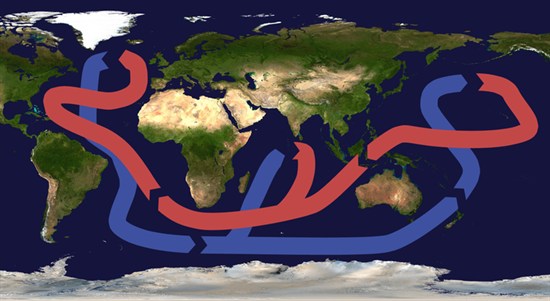
This is a re-post of a Carbon Brief article by Freya Roberts
A new look at how the earth freezes and thaws suggests that while colder glacial periods in earth's history are triggered by changes in the planet's orbit, it takes climate feedbacks to give a full picture of why the planet freezes and thaws every hundred millennia.
Earth has cycled between glacial and interglacial periods roughly every 100,000 years out of the past million. When the climate cools, vast ice sheets grow slowly from the north pole towards the equator, burying much of North America, Europe and Asia. When earth warms again, these continent-sized ice sheets melt quickly and retreat towards the poles.
Scientists previously thought that this cycle is caused by variations in the amount of solar energy reaching earth. A scientist named Milankovitch came up with the idea in 1941. He suggested that changes in earth's rotation, tilt and orbit all affect the distance between the sun and the planet, changing how warm it is in a small but significant way, on a timescale of tens of thousand to hundreds of thousand years.
But according to the authors of a new study in Nature, these cycles alone aren't enough to explain how vast ice sheets grow and shrink from glacial to interglacial.
The Nature authors suggest that to understand why vast ice sheets grow and shrink, you need to look at climate feedbacks - natural processes that interact and amplify the changes in the amount of solar energy reaching earth.
Their theory is that while changes in sunlight might be enough to tip the climate system into a glacial period, once ice sheets start to grow, they alter earth's climate in a way means they carry on growing.
One example of such positive feedbacks is changes in how reflective the planet is. The bigger ice sheets are, the more sunlight they reflect back into space. So as ice sheets grow, this helps make the climate colder - and more conducive to ice sheet growth.
Other feedbacks are at play too, the authors suggest. As the water cycle pumps more moisture out of the oceans and into ice sheets, sea levels fall. This alters ocean circulations, and since the ocean and atmosphere are closely tied, the entire climate system is affected.
Ocean circulations currently redistribute heat all around the world - warm surface waters are shown in red and deeper cool waters are show in blue.
The new study is the first time scientists have factored such major feedbacks into model simulations of glacial cycles across the entire northern hemisphere. It's probably the most detailed explanation anyone's come to for why earth goes in and out of glacial periods every 100,000 years.
Prof Heinz Blatter, a co-author on the paper, explained:
"Milankovitch's idea that insolation [the amount of solar energy reaching earth] determines the ice ages was right in principle. However, science soon recognised that additional feedback effects in the climate system were necessary to explain ice ages. We are now able to name and identify these effects accurately."
Earth's climate is currently in a warm spell between glacial periods. The last ice age ended about 11,000 years ago. Since then, temperatures and sea levels have risen, and ice caps have retreated back to the poles.
Of course, on top of these epic natural cycles manmade carbon emissions are having an effect on the climate. Over short timescales (geologically speaking) of centuries and millennia, greenhouse gas emissions from human activities are the main cause of climate change.
In its 2007 report, the Intergovernmental Panel on Climate Change (IPCC) said it is very likely human activity is responsible for most of the observed temperature increase since the 1950s, mainly because of burning fossil fuels. The report also shows that natural factors, like the amount of energy being given off by the sun, are having a much smaller effect on climate than we humans.
At the moment, the three Milankovitch cycles are out of sync, meaning there's no threat of earth-sun changes affecting the climate significantly any time soon. Rather, by adding greenhouse gas emissions into the mix, mean temperatures and sea levels are set to carry on rising - bringing with them a host of climate impacts.
Abe-Ouchi et al. (2013) Insolation-driven 100,000-year glacial cycles and hysteresis of ice-sheet volume. Nature. DOI: 10.1038/nature12374
Posted by dana1981 on Tuesday, 13 August, 2013
 |
The Skeptical Science website by Skeptical Science is licensed under a Creative Commons Attribution 3.0 Unported License. |